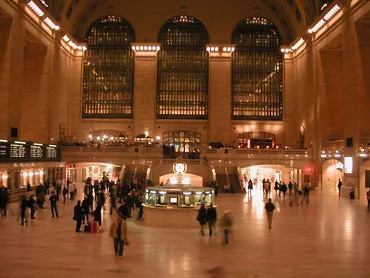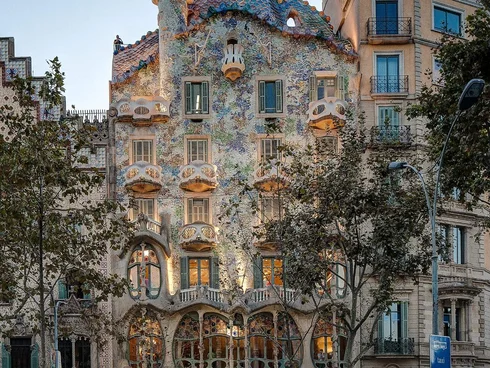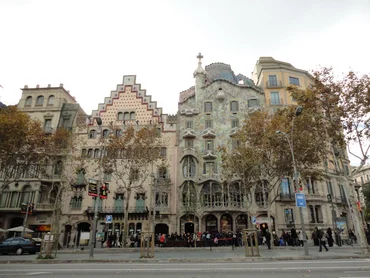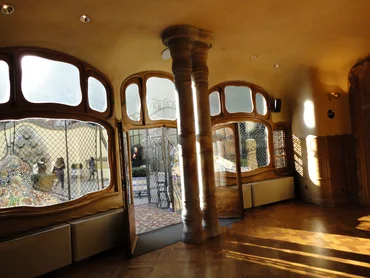
They are iconic: our modernist masterpieces have made architectural history. And set new standards.
The industrial revolution paved the way for modernism. The efficient production of glass, steel and concrete at the end of the 19th century heralded a new era in architecture. It was characterised by clear forms and minimalist aesthetics. New reinforced concrete constructions enabled the creation of building envelopes that had never been seen before. Modern high-rise buildings reached new dimensions. The days of lavish stucco and elaborate, heavy brick structures were over. The masterpieces of modernism inspire with their innovative power and iconic design.
5. Grand Central TerminalNew York
The famous Grand Central Terminal in New York was built between 1903 and 1913. The station was planned by the architectural firms Warren & Wetmore and Reed & Stem - both representatives of Beaux-Art. Originally characterised by historicism, i.e. not very modern, the architects reinterpreted the style. Although the ceiling frescoes and stucco in the large main hall are reminiscent of the old Baroque era, state-of-the-art technologies such as electric lighting and the electrification of the rails, as well as the visible use of steel, mark the transition to a new era. The shapes and the ceiling fresco are also much more minimalist than their historical predecessors. New York's main railway station remains a pioneer in architectural history to this day.
4. Casa BatllóBarcelona
Casa Battló is a refurbishment project from the early 20th century. From 1904 to 1906, architect Antoni Gaudí extensively renovated both the entire façade and the interior of this residential building. In doing so, he created a new, organic aesthetic in the architecture. Gaudí is considered the founder of Catalan Art Nouveau. He renovated a total of five houses in a row at this prominent address in Barcelona in his newly conceived style. However, Gaudí's main work, the world-famous Sagrada Familia, is still unfinished.
3. Villa DirickzBrussels
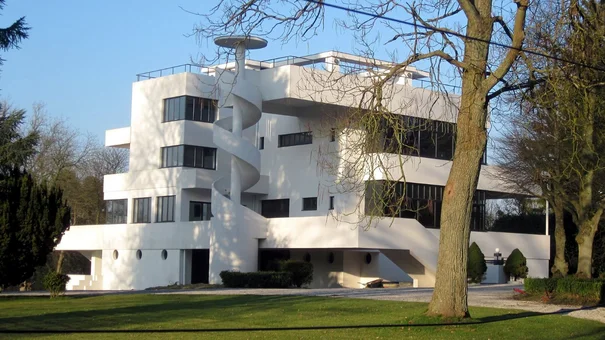
Architect Marcel Leborgne designed this four-storey villa for an entrepreneur named Dirickz. Dirickz and his family were able to move in in 1933. With his work, the Belgian architect heralded modern architecture in his country - modelled on the Bauhaus style and with Art Deco elements. The external spiral staircase made of smooth reinforced concrete with a height of 15 metres immediately catches the eye. It connects the garden with the sun terrace on the roof of the house. Despite the reduction to the essentials, the residents do not have to do without the most luxurious fittings and plenty of space. Soft lines and clear forms round off the Villa Dirickz to create a masterpiece of modernity.
2. Fagus plantAlfeld
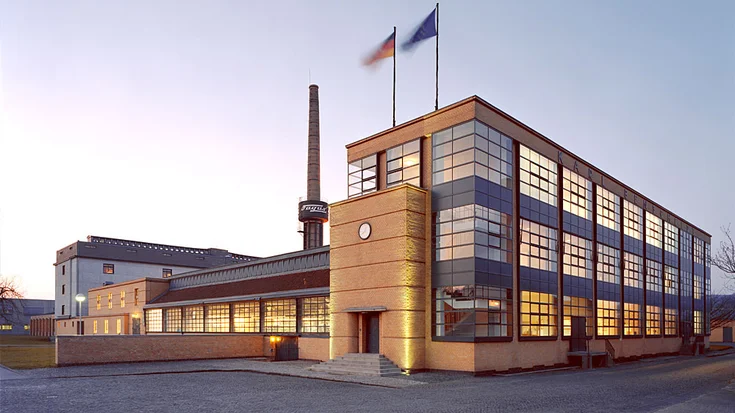
The Fagus factory in southern Lower Saxony was designed in 1911 by the architect Walter Gropius and his colleague Adolf Meyer. The shoe last factory was one of the first European modernist buildings to be listed in 1946. The façade design was completely new at the time of construction with the extensive use of glass curtain walls. The skeleton construction method, which was implemented for the first time, opened up completely new possibilities that are still used today. With the Fagus Factory, Walter Gropius wrote architectural history and paved the way for a new era. Gropius is considered a co-founder of the Bauhaus. Alongside greats such as Ludwig Mies van der Rohe, Frank Lloyd Wright and Le Corbusier, Gropius is cited as a pioneer of modern architecture.
1. Empire State BuildingNew York
In just one year - from 1930 to 1931 - probably the most iconic building in the world was built: the Empire State Building in New York. The New York architectural firm Shreve, Lamb and Harmon had no experience to fall back on when planning the project, as a building this tall had never been built before. With its total height of 443 m, the Empire State Building was unsurpassed until the completion of the World Trade Center in 1972. The Empire State Building in Art Deco style consists of a steel frame and a façade made of limestone and granite with more than 6,000 individual windows. Today, the skyscraper is a famous landmark that characterises the New York skyline with its unmistakable shape. Known from countless Hollywood films, as a venue for festive events, as a tourist attraction or popular meeting place - and as a beacon project of modernity.

